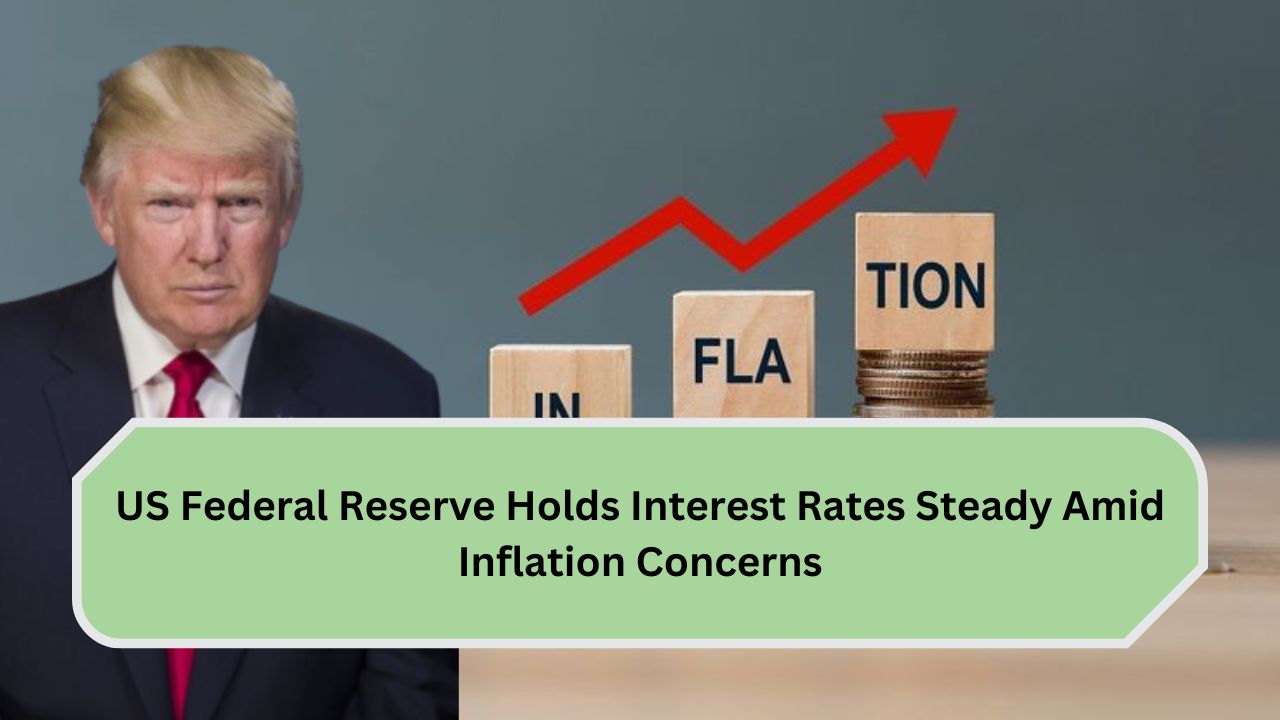In its most recent meeting, the US Federal Reserve decided to keep interest rates unchanged, signaling its cautious approach in managing the country’s economy. Despite ongoing concerns about inflation, the Fed’s decision comes at a time when economic recovery is still underway, and it has prompted mixed reactions from economists and market analysts. The central bank’s action—or lack thereof—reflects the complex balancing act between fostering economic growth and containing inflationary pressures.
Background: Why Inflation Remains a Concern
Inflation has been a persistent challenge for many economies worldwide, and the United States is no exception. Over the past few years, inflationary pressures have fluctuated, driven by a combination of supply chain disruptions, rising commodity prices, and government fiscal policies aimed at spurring recovery after the pandemic.
In particular, the US has seen significant price increases in essential sectors such as energy, food, and housing. While inflation has eased from its peak levels in 2022, it remains above the Federal Reserve’s target of 2% annual inflation. This has placed the central bank in a difficult position—raising rates could slow down economic growth, but not acting could risk inflation spiraling out of control.
The Fed’s Decision
At its latest meeting, the Federal Open Market Committee (FOMC) chose to hold the federal funds rate steady at 5.25% to 5.50%, where it has been since the last hike in July 2023. This decision comes as a continuation of the Fed’s cautious stance, even as inflation remains above target. Federal Reserve Chairman Jerome Powell emphasized that while inflation has moderated, it is still too high, and the central bank is committed to bringing it back to target over time.
The decision to keep interest rates steady also reflects the Fed’s assessment of broader economic conditions. Economic growth has been resilient, unemployment remains low, and consumer spending continues to drive economic activity. However, the Fed remains vigilant in monitoring potential risks, including the effects of global economic trends and geopolitical events.
The Economic Landscape
To better understand the broader context of the Fed’s decision, it’s helpful to examine some key economic indicators:
| Economic Indicator | Current Status | Trend |
|---|---|---|
| Inflation Rate | 3.7% (as of Sept 2024) | Moderating but still above target |
| Unemployment Rate | 3.8% | Low and stable |
| GDP Growth | 2.1% annualized (Q3 2024) | Steady growth |
| Consumer Spending | Strong | Positive, supporting growth |
| Core Inflation (Excluding Food & Energy) | 4.0% | Persistent above target |
These indicators suggest that while inflation is on a downward trend, it remains a significant concern. The unemployment rate is at historically low levels, indicating that the labor market remains tight, which can contribute to wage pressures and sustained inflation.
What’s Next for the Federal Reserve?
Looking ahead, the Federal Reserve faces an uncertain economic landscape. While some analysts suggest that further rate hikes may be necessary to bring inflation under control, others warn that doing so too aggressively could stifle economic growth. The Fed’s strategy will likely hinge on how inflation evolves in the coming months and the impact of global economic developments.
It is important to note that the Fed has emphasized its commitment to data-driven decision-making. As inflation slows and economic conditions change, the central bank may adjust its policies to ensure that it meets its dual mandate: promoting stable prices and maximum sustainable employment.
Conclusion
The Federal Reserve’s decision to hold interest rates steady amidst inflation concerns reflects its cautious approach to managing the US economy. While inflation is still a challenge, the Fed is balancing the need for price stability with the desire to avoid disrupting economic recovery. As we move into 2025, all eyes will be on future Federal Reserve meetings to see how they navigate this delicate balance.
FAQ’S
1. Why did the US Federal Reserve decide to hold interest rates steady?
The Federal Reserve decided to keep interest rates unchanged due to a balance of factors: while inflation remains elevated, the economy shows resilience.
2. What are the current interest rates set by the Federal Reserve?
As of the latest meeting, the Federal Reserve has set the target range for the federal funds rate at 5.25% to 5.50%. This rate range has been maintained in an effort to combat inflation while not stifling economic growth.
3. How does the Federal Reserve’s decision impact the average consumer?
For consumers, the decision to hold interest rates steady means that borrowing costs will remain relatively high. This includes the interest rates on mortgages, car loans, and credit cards. On the other hand, savers may continue to benefit from higher returns on savings accounts and other fixed-income investments.

